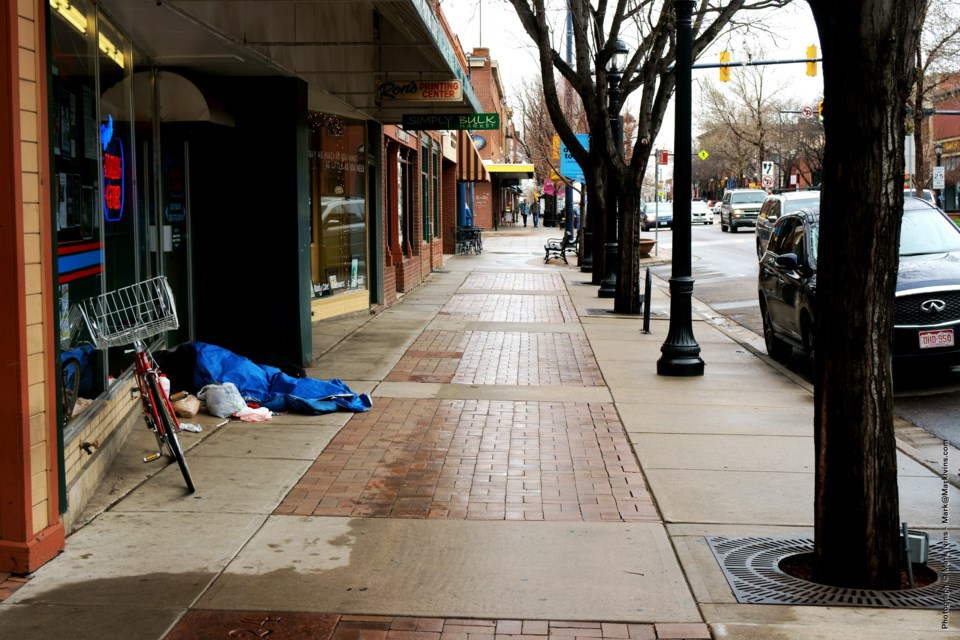Native Americans and Black people were overrepresented in homelessness relative to the general population of Boulder County, according to a recently released survey.
This month, the Metro Denver Homeless Initiative released the full data for the 2022 annual Point-in-Time count data. The count captures homelessness nationally on a single night in January and showed an overall increase across the Denver metro area of 784 individuals from pre-pandemic levels in 2020, the last time the region completed a comprehensive count.
The Point-in-Time count is held during the last week in January across the United States to capture the overall size and demographics of the homeless population. While homelessness increased, MDHI Executive Director Jamie Rife pointed out that the number of veterans experiencing homelessness regionally decreased by 31% from 2020 to 2022.
She also pointed out the overrepresentation of people of color in the homeless population, specifically Black and Native American people.
“Homelessness is an issue of race and must be approached through this lens,” Rife said.
The Denver metro count took place Jan. 24 and included those staying in shelter and outdoors. On that night, 457 people were homeless in Boulder County. Of those individuals, 279 were staying in an emergency shelter, 96 in transitional housing and 82 were unsheltered, meaning they were sleeping on the streets or another place not meant for human habitation.
The survey found that one in two homeless people in Boulder County were experiencing homelessness for the first time.
While the majority of homeless people in Boulder were adult-only, there were 11 members of families and 50 unaccompanied youth also homeless on that night. The survey found that 5.3% of homeless people in Boulder County were under the age of 18, and more than half of homeless people in Boulder County were over 45.
Native American, Black and multi-racial people were overrepresented in the county compared to the Census populations in Boulder County. Just under 4% of homeless people in Boulder County were Indigenous, while they make up less than 1% of the county’s population.
Black people made up 11.6% of homeless people counted Jan. 24, but made up only 1.2% of Boulder County’s residents. Multi-racial people were 12.4% of the homeless people counted, compared to 2.9% of the overall population.
White people make up about 90% of Boulder County’s population, but only 72.2% of homeless individuals were white.
Hispanic and Latino people were also somewhat overrepresented in the survey, making up 20.6% of homeless people compared to Boulder County being 14.1% Hispanic/Latino.
While the majority of homeless people counted, 285, were male, six were gender-nonconforming. Less than five homeless people were transgender.
Due to COVID-19 safety concerns, the Denver Metro region did not conduct a count of individuals staying outdoors in 2021. In January 2020, about six weeks before the pandemic began, there were 6,104 homeless people regionally.
According to the count, there was a 12.8% increase in the total number of homeless people in the Denver metro area. While the number of people staying in shelters remained pretty consistent between 2020 and 2022, unsheltered homelessness increased regionally.
More than a third of Boulder County respondents report mental health issues, while 27% had a chronic health condition, 6% had a disabling condition and 22% were dealing with domestic violence.
In Broomfield County, there were 86 people experiencing homelessness on the count night. Twenty-two of those people were staying in emergency shelters, while the remaining 64 were unsheltered, according to the survey. For conditions and barriers, 38% of Broomfield respondents said they had mental health issues, 34% had chronic health conditions, 10% had a disabling condition and 15% were dealing with domestic violence.
There were nine Native Americans experiencing homelessness in Broomfield, equal to 11.8% of homeless people surveyed, despite making up only 0.8% of the Broomfield population. Just over 88% of people surveyed were white, which is slightly higher than the proportion of white people in Broomfield, according to the Census.
Rife noted that the Point-in-Time is a snapshot of homelessness on a single night with numerous variables like weather, count participation, volunteer engagement and more.
“While this count can help us understand homelessness on a single night, getting to a place where we have comprehensive, real-time data regionally is the ultimate goal,” Rife said.



